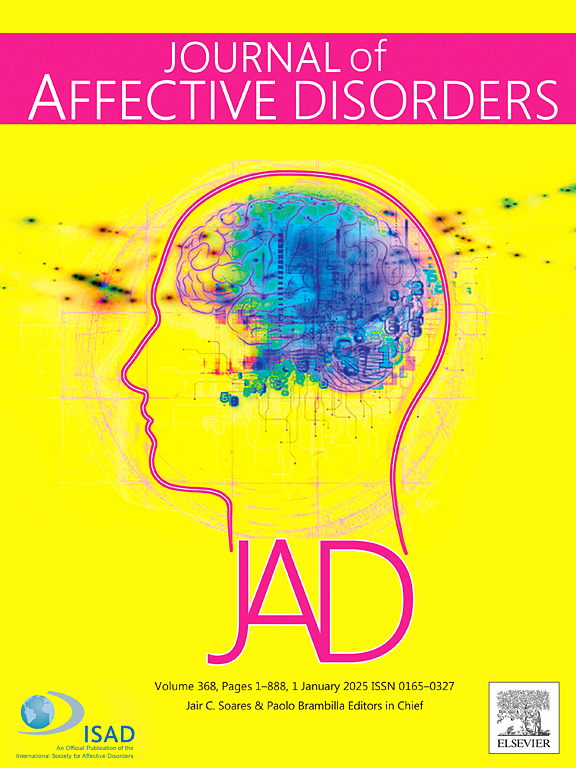HPA-axis multilocus genetic interaction with stress life events in predicting changes in adolescent suicidal ideation
IF 4.9
2区 医学
Q1 CLINICAL NEUROLOGY
引用次数: 0
Abstract
Background
Research suggests that genetic variants linked to the hypothalamic-pituitary-adrenal (HPA) axis moderate the association between stressors and change in suicidal ideation, but examining gene-environment interactions with single polymorphisms limits power. This study investigates how interactions between stressful life events and HPA-axis polygenic risk predict changes in suicidal ideation.
Methods
A sample of 760 adolescents (Mage = 14.15 ± 0.63 years; 54.6 % girls) was followed up over two years. The polygenic risk was assessed using a multilocus genetic profile score (MGPS) based on the additive effects of six HPA-axis candidate genes (SKS2, NR3C1, NR3C2, FKBP5). Participants were categorized into distinct trajectories of suicidal ideation based on time-varying changes in their ideation scores. Multivariate logistic regression analyses were conducted to identify predictors of trajectory membership.
Results
(1) Five distinct trajectories of suicidal ideation were identified: resistance (52.7 %), persistence (13.1 %), delayed (11.4 %), remission (15.6 %), and relapsing (7.2 %). (2) The combination of HPA-axis MGPS and SLEs showed good predictive accuracy for suicidal ideation trajectories, as indicated by the area under the ROC curve. (3) The interaction between all six stressful life events and HPA-axis MGPS is more predictive of developing persistent trajectories of suicidal ideation. Meanwhile, HPA-axis MGPS interacted with factors such as interpersonal relationships, academic pressure, and loss to better predict the delayed and relapsing suicidal ideation compared to the resistance group.
Conclusions
This study suggests that genetic variants associated with the HPA axis exert a polygenic, additive effect on the relationship between stressful life events and longitudinal increases in suicidal ideation.
求助全文
约1分钟内获得全文
求助全文
来源期刊

Journal of affective disorders
医学-精神病学
CiteScore
10.90
自引率
6.10%
发文量
1319
审稿时长
9.3 weeks
期刊介绍:
The Journal of Affective Disorders publishes papers concerned with affective disorders in the widest sense: depression, mania, mood spectrum, emotions and personality, anxiety and stress. It is interdisciplinary and aims to bring together different approaches for a diverse readership. Top quality papers will be accepted dealing with any aspect of affective disorders, including neuroimaging, cognitive neurosciences, genetics, molecular biology, experimental and clinical neurosciences, pharmacology, neuroimmunoendocrinology, intervention and treatment trials.
 求助内容:
求助内容: 应助结果提醒方式:
应助结果提醒方式:


